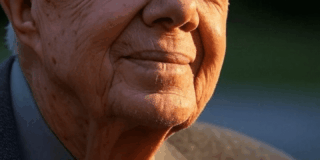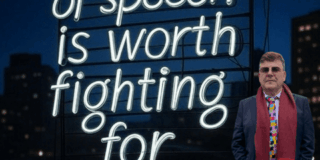On the request of a friend, this post offers some insights as to why someone would wish to burn the Australian flag as an act of protest.
The events in Canberra on the day commemorating the arrival of the first European settlers in Australia widely known as Australia Day have provided the media with no end of racial and political fodder. I spent some time reading comments on Yahoo!7, including:
The function at The Lobby Restaurant was to recognize the efforts of Emergency Service workers during the 2009 Victorian Bushfires and the 2011 Queensland floods. The bravery and selflessness of emergency service workers is certainly laudable and deserves recognition. Emergency Service workers would be expected to include SES, CFA, RFS and metropolitan fire brigades, ambulance and police.
After the protest at The Lobby restaurant, held just two hundred meters from the Aboriginal Tent Embassy, activists returned to the gathering and apparently burned an Australian flag marching to Parliament House. Always a provocative act akin to spitting on the flag, it is viewed as trampling on all that is good and right in the democracy that we call Australia. So many people fail to understand the significance of such an act. All they see is the burning of their nation, ungratefulness, liars who choose to be dole bludgers rather than workers.
A couple of years ago I wrote of why I believe Australia should have a new flag. The current flag commemorates the Act of Federation and is the emblem of this country in all diplomatic interactions, the symbol so many backpackers sew to their bags. And whilst the flag represents the aspirations and security of so many Australians, for others it represents the loss and suffering of their culture, family members and the failure of democracy.
On 1 January 1901, Aborigines were not counted in the census. For 120 years, the ‘poor black savage’ had fought as the settlers and their offspring not only built upon lands that were recognized among the indigenous people as belonging to certain Aboriginal nations, but suffered as they were refused the right to collect sustenance from those same lands. The land held their food sources, the bodies of their ancestors and the spirits that fed their Dreams. For at least 50 years prior to Federation, the people of many Aboriginal nations were separated on the basis of colour, children sent away to missions (aka orphanages), often on the pretexts of lies. Siblings were separated, sometimes being sent to differing states. The traditional ways of life and beliefs systems were decried as primitive and pagan and usurped by missionary zeal.
People say, “Why don’t they just get on with it? It was over 100 years ago.” If only that were true.
The abuses that have pockmarked the birth of the Australian nation continue in the modern era. Bakchos himself was separated from his siblings, taken from the home of his father. The children were sent to live with various families. Their names were changed by the government to make it difficult for them to reconnect with their families. And they lost property, yes land, that was owned by the family. The same happened to his father’s generation.
The last officially documented massacre is recorded as occurring at Coniston in the Northern Territory in 1928, some Aboriginal families still have members who survived massacre in locations other than Coniston at later dates. There are other massacres later than Coniston to be uncovered if you have the persistence to trawl deep enough for the details. No, I will not point them out to you. Who would wish to relive the horror seen through the eyes of a 5 year old? 1928 is not that long ago. We still hunt Nazi sympathizers from that era to hold them accountable for their crimes.
The nuclear tests in Maralinga were carried out on land in which Aboriginal people were known to have lived. The land has only recently been handed back to the traditional owners, many of whom were young at the time of the tests in the 1960s. Would you want to live on such land?
All of this happened in the twentieth century, much of it in my lifetime. Indigenous families across Australia have lived with the legacy of forced removable and loss of family ties for generations. It is no less devastating than the loss of family for Jewish holocaust survivors; grandparents, aunts, uncles, siblings taken by the ‘progressive’ and religious moral right of the settlers.
In the twenty-first century, the Northern Territory Intervention smeared all the Indigenous with the stain of moral decrepitude, treating them like children and teenagers who cannot be trusted to make their own decisions. Jobs are given to contractors where locals had maintained basic services in the communities themselves under CDEP and houses that the government has promised to build have never eventuated. Two men, one obviously Indigenous and wearing a suit after finishing work in a government department, hail a cab late at night, but are refused by the cab driver who indicates he won’t take the Aborigine. The suited black man walked home, despondent; his companion called me and asked me to collect him, at 3 am. He was raging at the injustice. He was hurt. He is Indigenous too, a Stolen child, but with the fortune (misfortune?) to be born fairer than his siblings. It’s not unusual. Three Indigenous men all wearing suits, all second degree relatives, stand on a Sydney street in the 1990s hailing a cab. Empty cabs speed by until the fairest of the three finally steps forward to gesture. Obviously education and sharp attire cannot overcome the stain of colour. The Yindjibarndi fight for just legal process in their battle against Fortescue Metals Group and the Western Australian Minister for Indigenous Affairs Peter Collier, all the while watching the double standards that seem to apply across this country if the land you are protecting is owned by non-Indigenous farmers trying to prevent the coal seam gas miners from forcing their way through the farm gates.
There’s the limited justice meted out to the perpetrators of harm against Kwementyaye Rider, Mr. Ward, Marlon Noble and Kevin Spratt. There are the ongoing abuses that police refuse to investigate and what many argue is a new generation of Stolen children being taken by DOCS. Australia’s most senior Indigenous female banking executive is still unable to get justice for an assault, witnessed and attested to by several non-Indigenous people in a Canberra café, because the Australian Federal Police refuse to investigate. There are the thousands of statements collected by Bakchos attesting to the abuses of person or process by Australian police officers, abuses that authorities in various jurisdictions have refused to investigate, some of which have been published on Blak and Black. Indeed ‘ruffle’, arrest is often a matter of race, but not in favour of the Indigenous, as the former Commissioner for ACT Revenue, his family and the thousands of victims providing statements to Bakchos can all attest.
This is Australia in 2012, on the day that the First Fleet raised the flag claiming sovereignty over Terra Australis, a land that was in fact not terra nullius, despite the arguments that have been peddled ever since. To the blak and black people of this nation Australia Day signifies the ongoing dispossession and marginalization of this nation’s Indigenous people and their descendants, the ongoing dispossession from their spiritual and physical homes, their sovereign states. Unlike the Maoris or the Indians of the Americas, they were never offered treaties of understanding or deeds of sale for their land. Truth is, even in the countries where such treaties were exchanged they’ve often failed to protect against future material loss. Nevertheless, the existence of such treaties has formed the basis of negotiations and compensations many years later and saved the cultural diversity that whilst feeding racial blight, also feeds the tourist dollar, and Australia feeds off the Aboriginal tourist dollar with gusto.
And it all began with a vision by the British Government to send a bunch of convicts to the ends of the earth in an experiment at empire building, to the harshest place they could find and the raising of a British flag on 26 January, 1788 in Sydney Cove. With settlement and the raising of the flag the dispossession began and the Aborigines of Australia remain marginalized today by many people and agencies in this country. The symbol of the origins of that dispossession are enshrined in the existing emblem of this country. That’s why some people feel that the Australian flag can and should be burned. And whilst I would not perform such an act, I can sympathize with the sentiment and I look to the day when a new flag can be raised, one that symbolizes the maturity and equality of this nation. I only hope I live long enough to see not just the symbol of such a Dream, but the practical reality.
| Will you sign the petition calling for a Royal Commission into the Australian Federal Police? |







I sure wish I had seen this post earlier when arguing with someone who was shrieking about how offended they were about the burning of the flag.
Great post.
Thankyou Anne, I will pass this post on to my friend. 🙂 xxx love to you both
Pingback: Australian Constitutional reform | Blak and Black
The funny part to me is that White people (such as myself) are steadily being dispossessed of the Australia they thought they controlled so cleverly, now in the name of globalism. I’m not talking about new waves of immigration here, but about the surrender of our destiny to decisions taken in Banking boardrooms or the UN. We are globally witnessing the careful destruction of the sovereign Nation/State and its replacement with a corporate monster that will own us all equally, Black, White and Brindle. Eventually our Black vs White dichotomy here in Australia will be rendered irrelevant in terms of how this Land we live on is controlled.